The types of cactus and landscape change as we approach Arizona from New Mexico. The saguaros sparse at first, appearing only occasionally among other cactus varieties in a giant pasture. Then suddenly, seemingly just as we cross the Arizona state line, they are overwhelmingly abundant everywhere we look. From the highway into the area, I see a family of javelina rooting around among the cactus and shrubs. The Tucson area is settled in an expansive lowland desert, its arid landscape surrounded by numerous mountain ranges: the Tucson Mountains, the Santa Catalina Mountains, the Rincon range, and the Santa Rita Mountains. We have arrived in the Sonoran Desert, and we are surrounded on all sides by its splendor.
Giant Saguaro Cactus of the Sonoran Desert
Saguaro National Park is a genuine forest of giant saguaro cacti, found exclusively in the Sonoran Desert. The park is divided into two districts – the Tucson Mountain District on the west side of Tucson and the Rincon Mountain District on the east side. Every meter of the park is filled with saguaro cacti in all stages of life and phases of blooms, surrounded at their feet by different cacti, ocotillo and other desert vegetation. The occasional porous, woody skeletons of cacti long-dead litter the ground, providing resources and habitats for many nocturnal desert creatures hiding out during the height of the day.
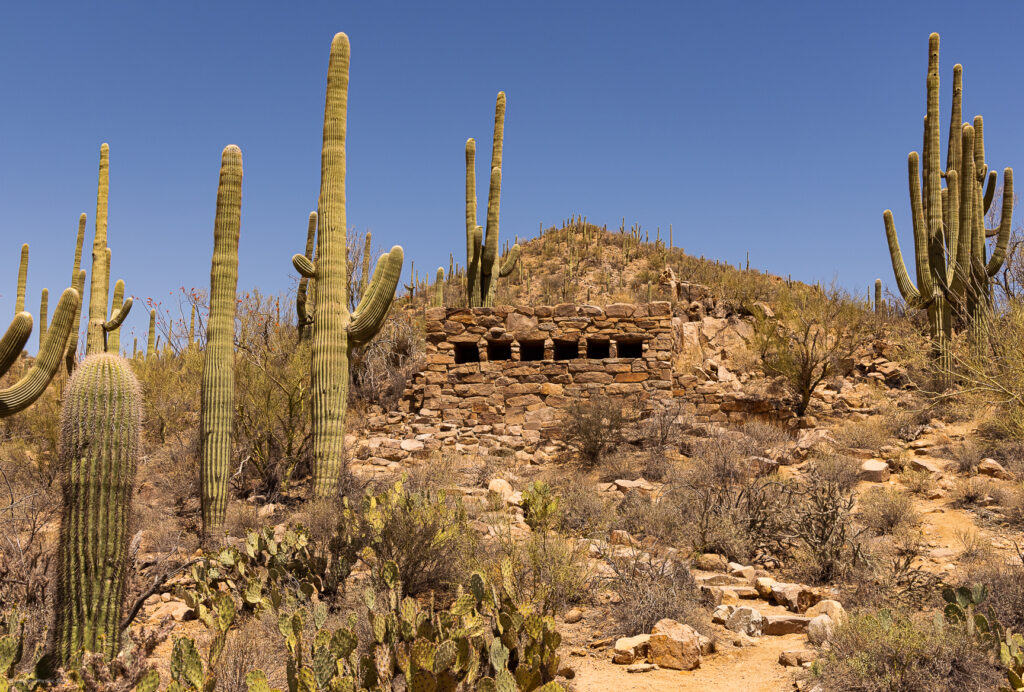
Saguaro cacti are true marvels. They reach upward of 40 feet in height in their lifetime, and one record-setting “spear” (a saguaro cactus that doesn’t have arms) reached 75 feet in height before it was blown over in a windstorm. They have a lifespan of 150 to 200 years on average, but the largest known saguaro cactus – Old Granddaddy – lived to an estimated 300 years old. It died in the 1990s with 55 arms. The saguaro also has large but shallow roots that sustain it. Their roots can extend nearly 100 feet just below the surface, with their longest taproots about a meter deep.
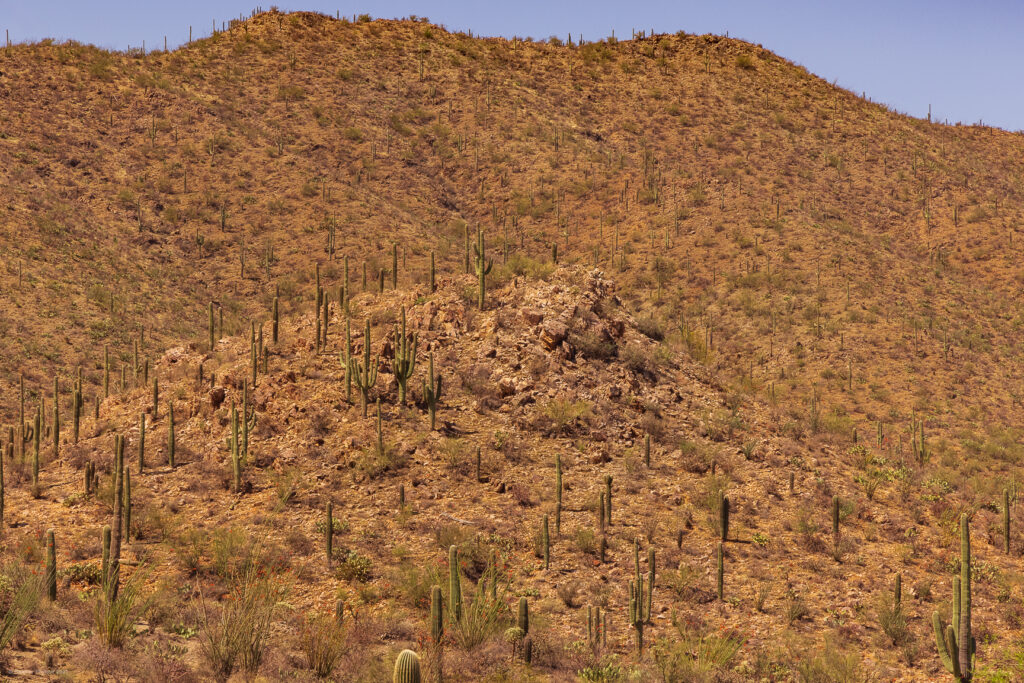
The beautiful saguaro cactus blossom is the state flower of Arizona. In Arizona, it is illegal to destroy the saguaro cactus. While these plants are not “endangered,” they take an incredibly long time to grow. Their centuries-long lifespan means that they may be just a few inches tall, even decades into their lives. Even if replanted at the harvest rate, it would take generations for these quiet giants to grow back.
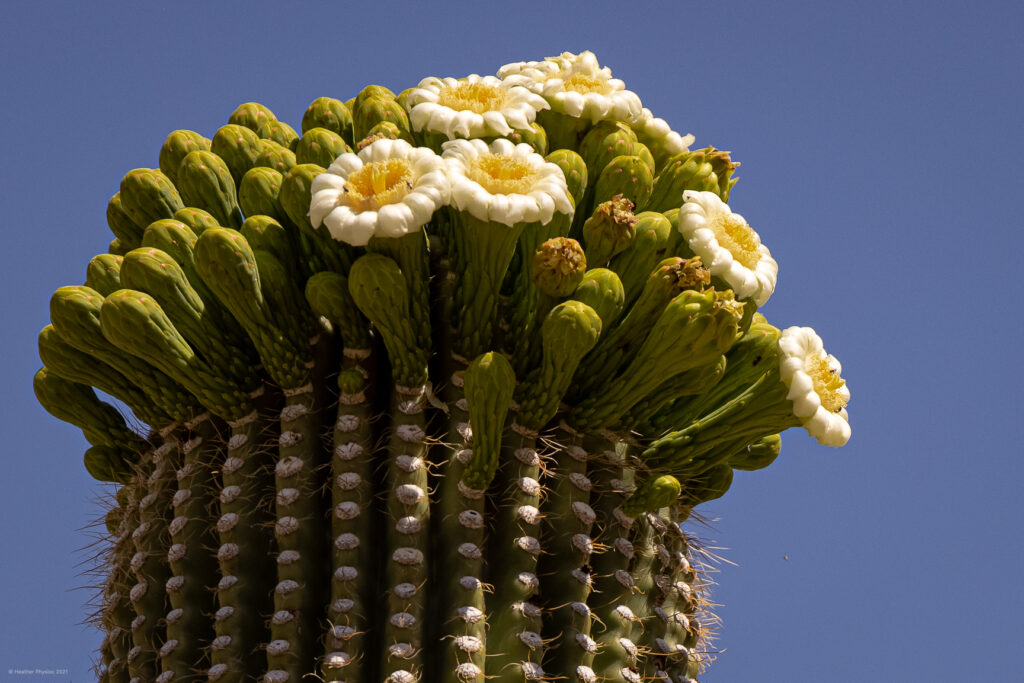
Desert Life Beyond Death
The saguaro cactus is an essential part of this unique desert environment, providing food, shelter and protection to the many species of animal that depend on it to survive. This is true at every stage of its life, up to and even beyond its death.
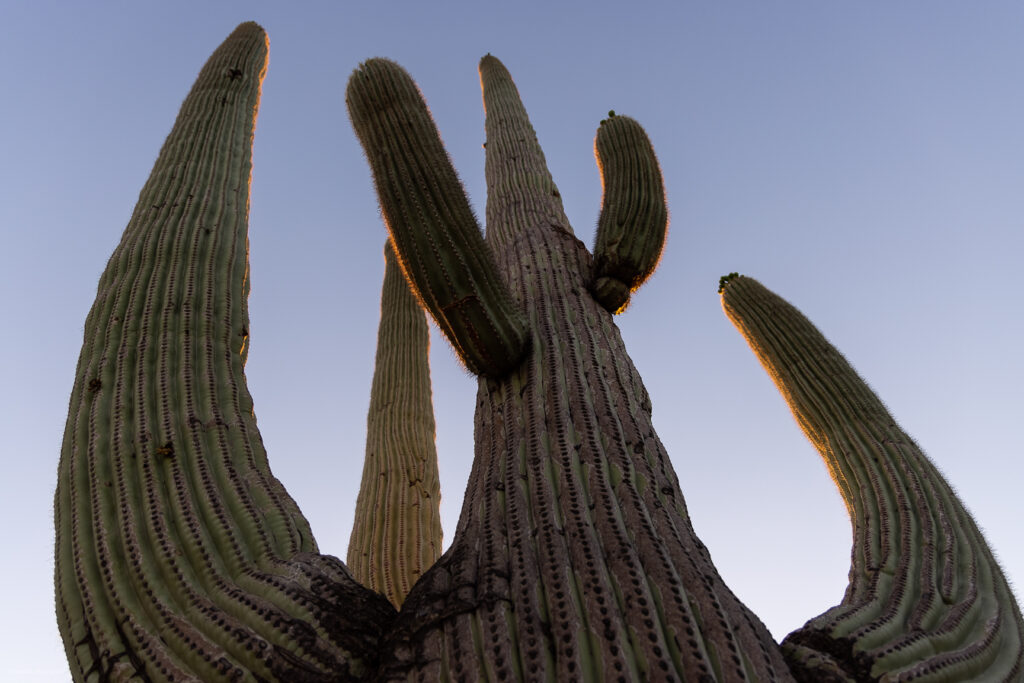
One such animal that thrives on the presence of saguaro cactus is the Gila woodpecker. This female Gila woodpecker surveyed her surroundings as I watched at sunrise, between bouts of hammering away at a nest hole in the cactus. Gila woodpeckers create these holes, then wait up to a few months to move in, so the cactus can dry out and become callous. It provides a safe and comfortable place for her to raise her young. Then, when this woodpecker family moves on, the hole goes on to serve the nesting needs of owls, flycatchers, wrens and other desert creatures. When the cactus dies, often the hardened nest hole – called a “boot” – is left behind.
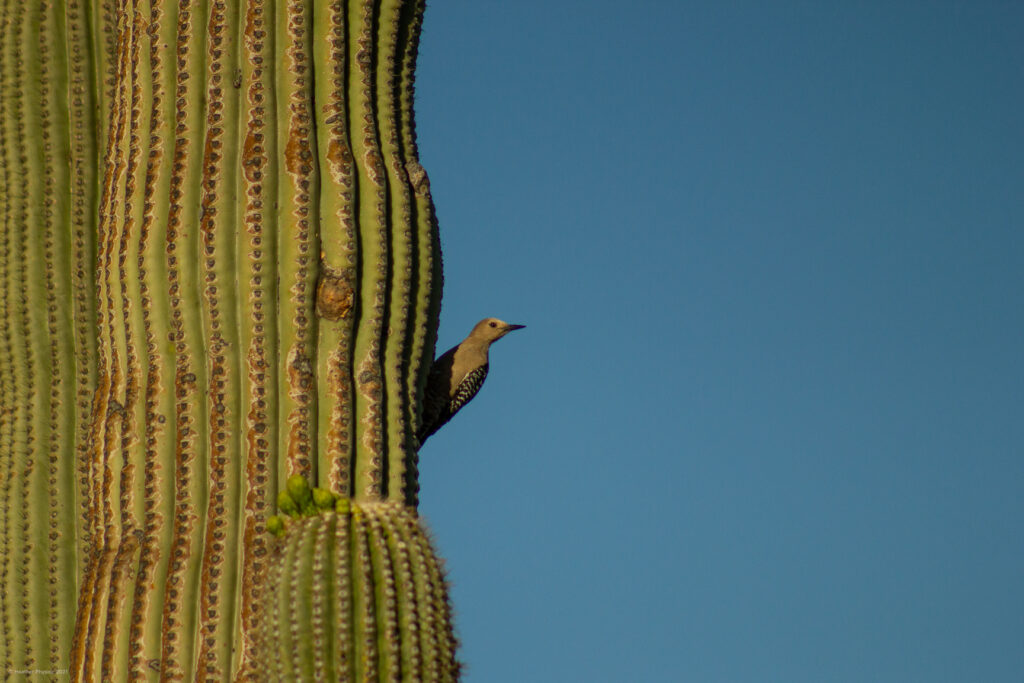
It’s a harsh but bustling life in the desert. In addition to the many woodpeckers, wrens and other birds flying overhead, the desert is teeming with life underfoot. Skittish kangaroo rats, speedy desert hares, and zippy little lizards duck effortlessly in and out of the cactus obstacle course.
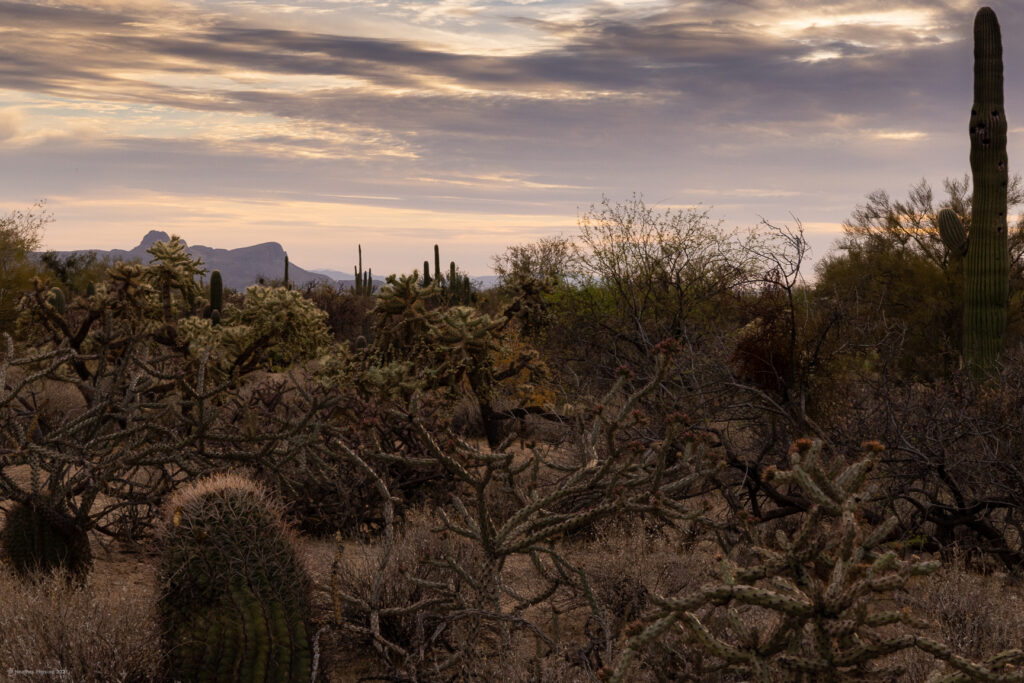
Everything in the desert is designed to maim. Hardy, centuries-old saguaro, cactus spines, and all assortments of stabby things surround every single step. The constant ping of steel-strong cactus spines was a sharp reminder of the harshness of this challenging desert climate. Traipsing around in the desert caused me numerous scrapes, scratches and stabs. In fact, my dog and I both sustained segments of jumping cholla cactus that seemingly lept out of nowhere to become passengers on our limbs.
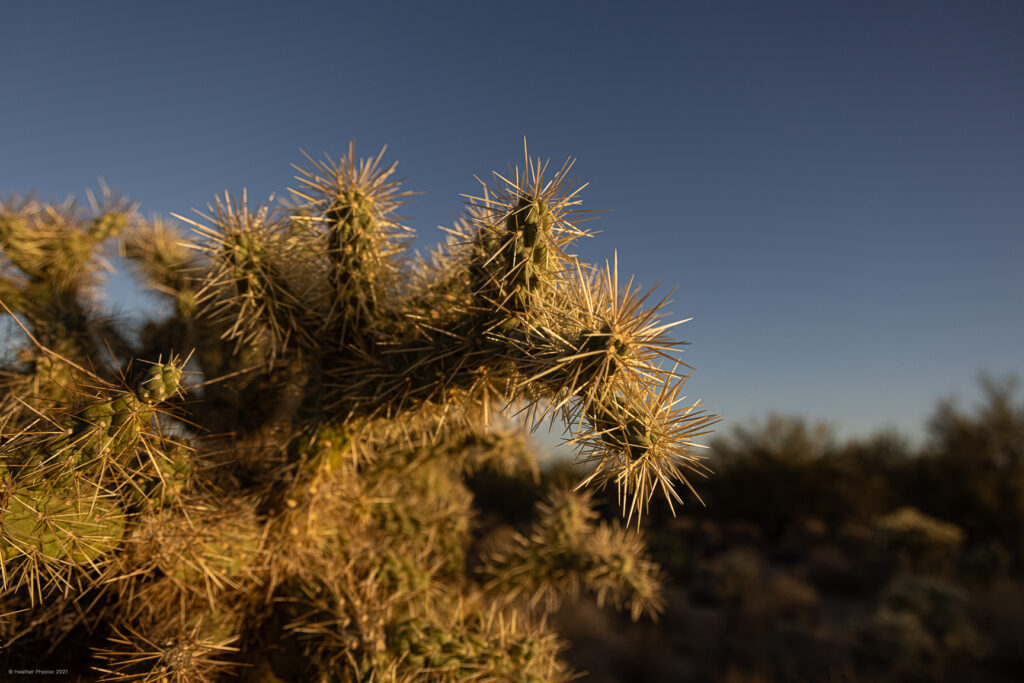
Mystery of the Desert
Our host pointed out that there was a rare crested saguaro cactus on their property. This particular specimen was simply astonishing. Its one-of-a-kind fanning shape was virtually symmetrical, fanning out like an ancient headdress.
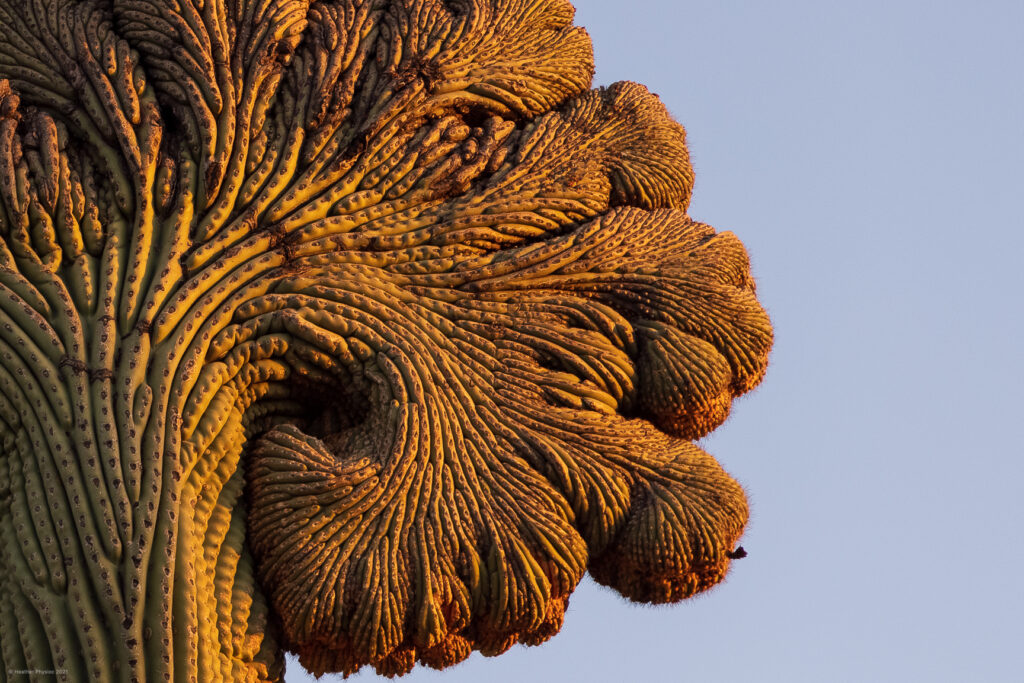
Even more mysterious, the cause for the mutation that results in these fan-shaped crests has not been determined. Some scientists speculate the reason is a genetic mutation, while others suspect the cause could be lightning or other damage. I returned to this cactus day after day, sunrises and sunset, to try to capture its beauty and strangeness.
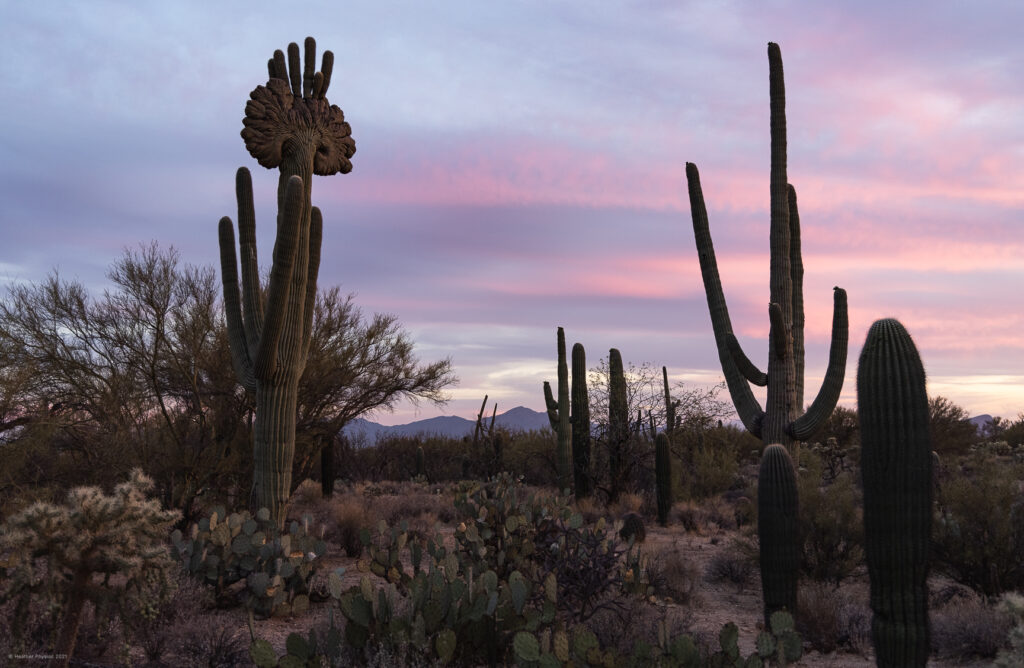
I am so grateful to have seen such an unusual, unique saguaro cactus in pristine condition. Especially so when our host also pointed out the state of destruction in the desert that only someone who sees it up close and personally can genuinely appreciate. “The desert is dying right now,” she said, referring to the extreme drought conditions causing even some century-old cacti in the region to shrivel and die in the heat.
Drought and Desert Deforestation
According to the U.S. Drought Monitor Report, nearly 99 percent of the state of Arizona is in a drought right now, of which 58 percent is under “exceptional drought” – the most extreme grade. This is a sharp increase from just 13 percent one year ago, and the western region of the U.S. has experienced drought for 17 of the last 20 years.

Arizona Drought Monitor, Last 20 Years, Drought.gov
Much of the Sonoran Desert has sustained a state of extreme or exceptional drought for the last two years, and the severe dry spell drags on. Wildfire season is underway with the high spring winds. Long-term forecasting predicts higher temperatures than average this summer. Streams and reservoirs that sustain life in the desert are lower due to the dry conditions. The globe continues to warm and reach new record highs, and this desert deforestation will continue.
As extreme drought increases in frequency and duration, so does the incidence of wildfires, further exacerbated by the spread of the invasive buffelgrass species in the region. Global warming will only continue to increase the heat and dryness in the Sonoran Desert, putting species without drought survival capabilities in grave danger. Deserts are particularly vulnerable to climate change. The precious saguaro cactus is forced to use more of its water as temperatures rise, increasing the likelihood they will die during droughts.

A Vivid Spectrum of Colors
With the desert under threat, I am constantly reminded that I am so incredibly fortunate to be here. To be staying at an incredible desert oasis with my dog at my side. Here, in the middle of the desert, watching the skies swiftly shifting color palettes then going dark. To enjoy the thrill of being surrounded by coyotes at unknown locations yipping at sundown. To walk in the middle of the street, on the outskirts of town, in the middle of the night, under a blanket of stars.
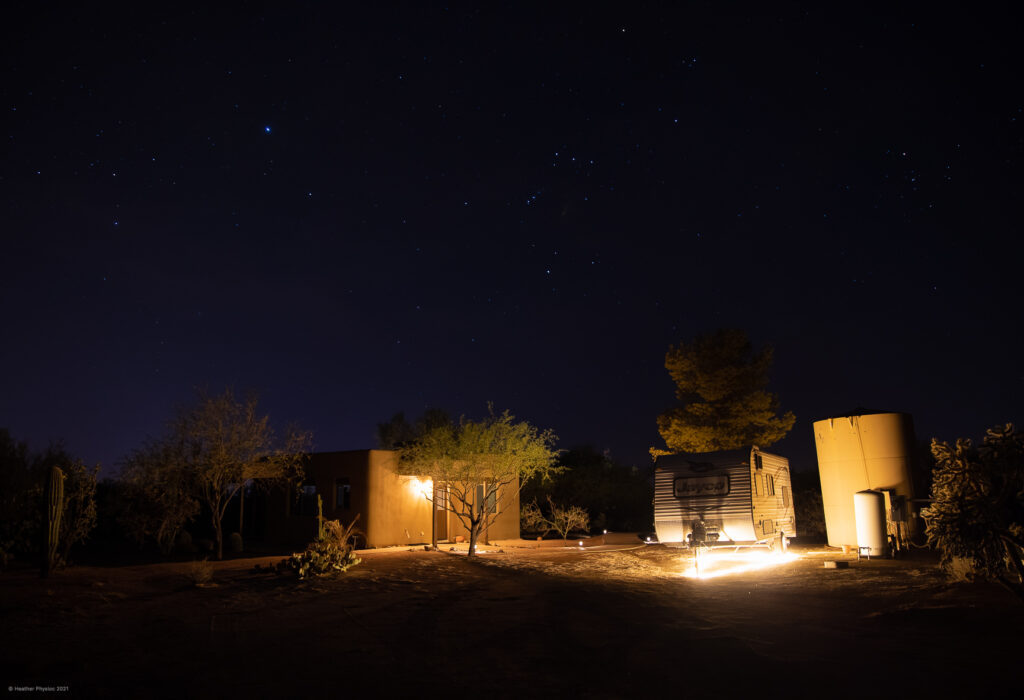
One of the most joyous parts of the desert experience is taking in the spectacular sunsets. If you always suspected the desert sunsets were more dramatic than other places, it turns out you’re not imagining it. Evenings in the desert are actually extraordinary.
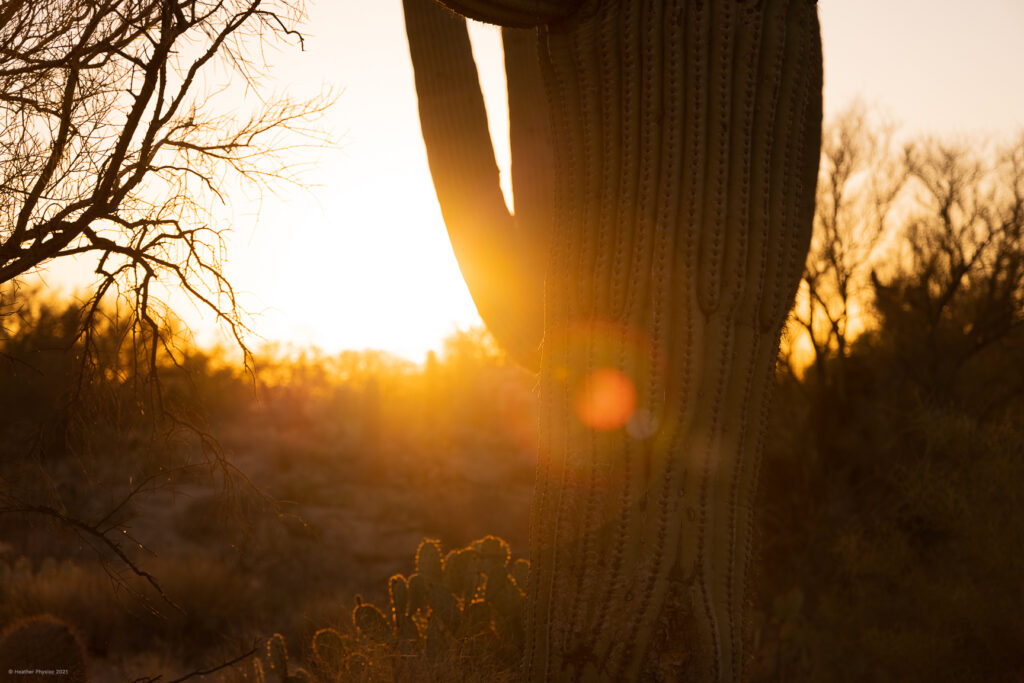
Because the desert environment is so clean, dry and pristine, the vivid spectrum of colors in the sunset is more visible to the human eye. The light filters through dust particles in the desert air to create the unbelievable, unmuted painted colors you see in the sky. Clouds add more visual interest as they catch and filter more light back to our eyes, and dark silhouettes of mountains and cactus contrast with the skies to add to the drama.
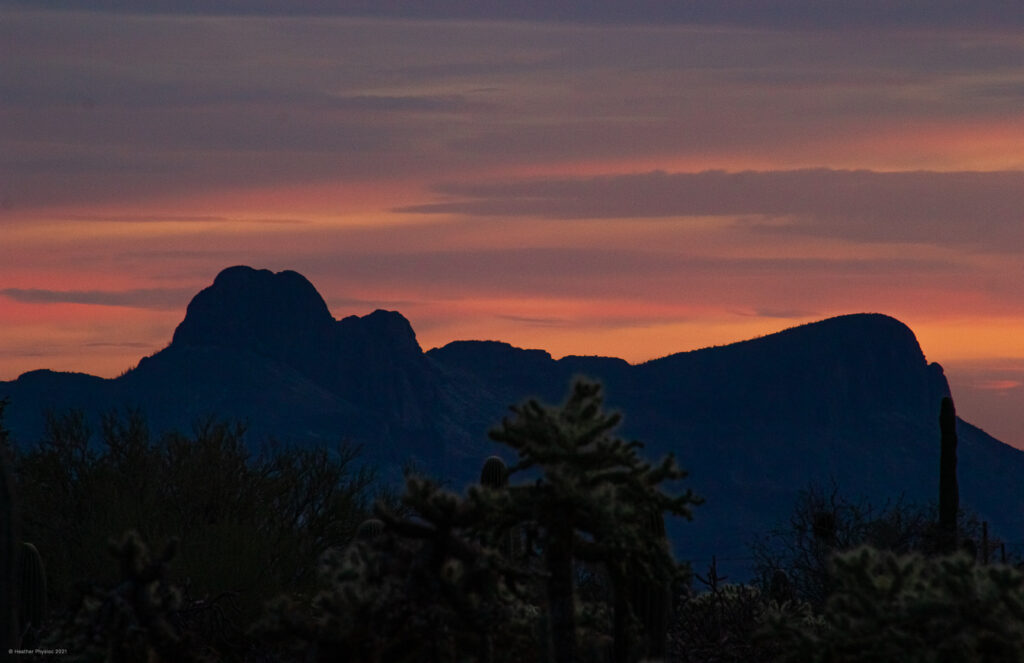
I am deeply thankful to have had this momentary freedom and fresh air. To live in the color, drama, curiosity and strength of the desert. To feel the temporary relief in escaping what we all have been through in the last year. To see this precious, irreplaceable place while it lasts.
Learn More, Do More
If you would like to make a positive impact on the precarious state of climate change and the Sonoran Desert and beyond, please consider learning more, volunteering, or donating:
- Contribute to any of these desert conservation organizations that are part of the Coalition for Sonoran Desert Protection (CSDP)
- Volunteer with Pima County Natural Resources, Parks & Recreation
- Learn about desert threats and endangered species from National Geographic
- Read the “Southwestern Desert Ecology of At-risk Species and their Habitats” report from USGS
- Fight to Save the Saguaros from Invasive Species with the National Park Service
Select Prints Available
Select prints from this photo set are available on my Zenfolio store. Half of my proceeds are donated to wildlife and environmental conservation charities, and the other half fuels my photography. Thank you for supporting an independent artist.
